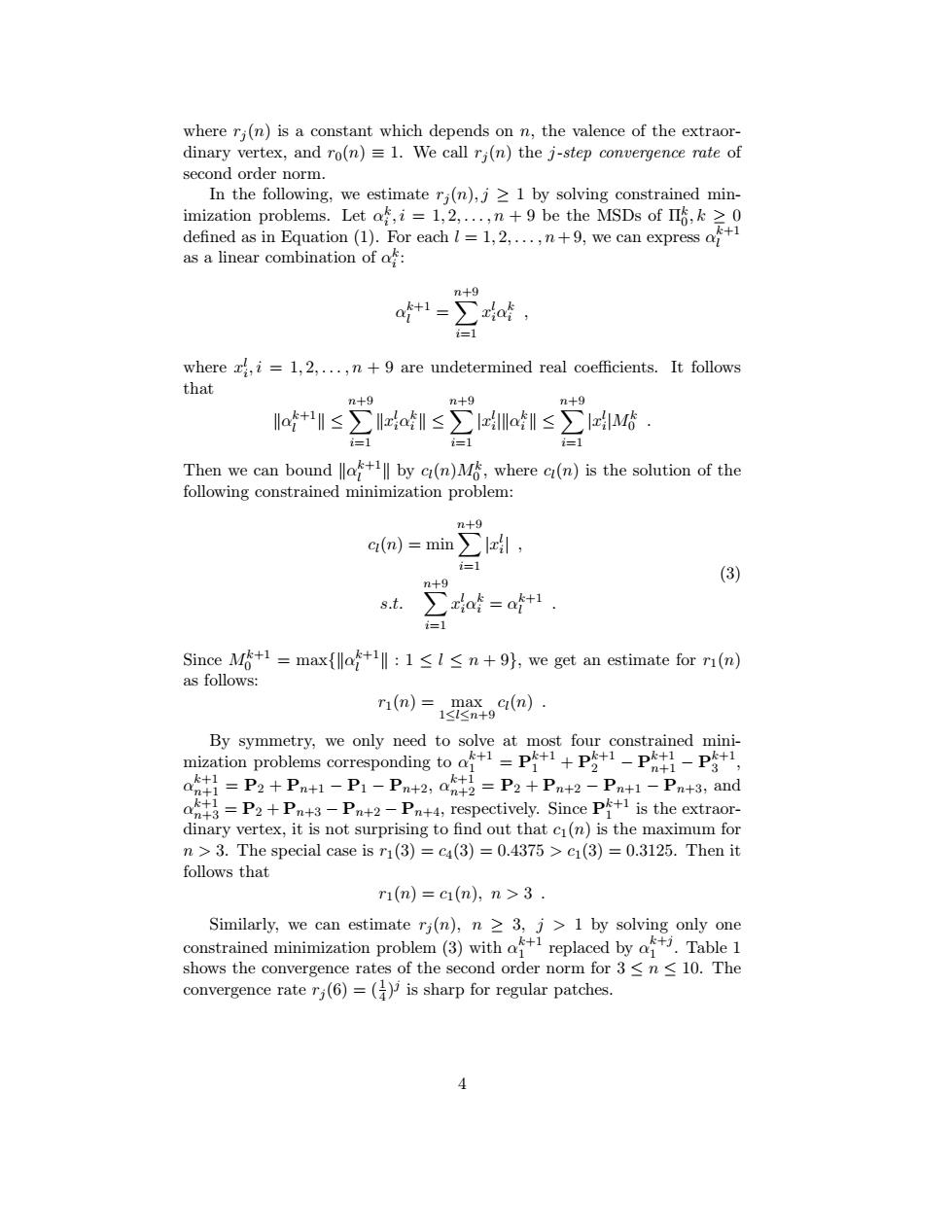正在加载图片...

ned ini e=h2.Rt9 tee折ata花6nm 4m=ia艺hl d芝a=t =a创.n>3 rder no 4 where rj (n) is a constant which depends on n, the valence of the extraordinary vertex, and r0(n) ≡ 1. We call rj (n) the j-step convergence rate of second order norm. In the following, we estimate rj (n), j ≥ 1 by solving constrained minimization problems. Let α k i , i = 1, 2, . . . , n + 9 be the MSDs of Πk 0 , k ≥ 0 defined as in Equation (1). For each l = 1, 2, . . . , n + 9, we can express α k+1 l as a linear combination of α k i : α k+1 l = nX +9 i=1 x l iα k i , where x l i , i = 1, 2, . . . , n + 9 are undetermined real coefficients. It follows that kα k+1 l k ≤ nX +9 i=1 kx l iα k i k ≤ nX +9 i=1 |x l i |kα k i k ≤ nX +9 i=1 |x l i |Mk 0 . Then we can bound kα k+1 l k by cl(n)Mk 0 , where cl(n) is the solution of the following constrained minimization problem: cl(n) = min nX +9 i=1 |x l i | , s.t. nX +9 i=1 x l iα k i = α k+1 l . (3) Since Mk+1 0 = max{kα k+1 l k : 1 ≤ l ≤ n + 9}, we get an estimate for r1(n) as follows: r1(n) = max 1≤l≤n+9 cl(n) . By symmetry, we only need to solve at most four constrained minimization problems corresponding to α k+1 1 = P k+1 1 + P k+1 2 − P k+1 n+1 − P k+1 3 , α k+1 n+1 = P2 + Pn+1 − P1 − Pn+2, α k+1 n+2 = P2 + Pn+2 − Pn+1 − Pn+3, and α k+1 n+3 = P2 + Pn+3 − Pn+2 − Pn+4, respectively. Since P k+1 1 is the extraordinary vertex, it is not surprising to find out that c1(n) is the maximum for n > 3. The special case is r1(3) = c4(3) = 0.4375 > c1(3) = 0.3125. Then it follows that r1(n) = c1(n), n > 3 . Similarly, we can estimate rj (n), n ≥ 3, j > 1 by solving only one constrained minimization problem (3) with α k+1 1 replaced by α k+j 1 . Table 1 shows the convergence rates of the second order norm for 3 ≤ n ≤ 10. The convergence rate rj (6) = ( 1 4 ) j is sharp for regular patches. 4